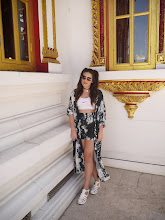
To further my analysis and in order to make sure I have a clear understanding of codes and conventions of a magazine front cover, I decided to look at a high end fashion magazine. In doing this, I will be able to determine a clear understanding of codes and conventions of all magazine front covers as opposed to just sticking to music magazines. This will give me a broader spectrum of what to include and it will allow me to maybe introduce some new ideas and challenge aspects of a music magazine front cover with those from a fashion magazine.
Similarly to the NME magazine front cover, this magazine includes its logo on the top of the magazine. The difference is it goes from left to right and covers the whole top of the magazine as opposed to being placed in the left hand corner. This suggests the magazine has power as it is dominating the front cover. It suggests that it leads rather than follows which is very relevant to the fashion world. To someone browsing through a shelf of magazines, they aren't going to be able to miss this striking heading as it will stick out of the top of other magazines if it was placed behind a different one on the shelf. The font is quite simple and sticks to one colour only-white. This automatically brings connotations of purity and cleanliness and this may reflect the content of the magazine. Although the positioning of the logo is very effective on this particular issue, I don't feel it will be suitable for a music magazine as a music magazine is dominated by music and that is what sells the magazine whereas in the fashion world it is all about identifying and setting the latest trends or designers and this particular publishment has a reputation of being the leading fashion magazine around the world. The name is what sells the magazine as opposed to anything else.
Similarly to NME magazine, the strap lines are positioned around the main image and only slightly covering the actresses body, not covering her torso or face at all. This is as, once again, the focus is on the actress and the first thing the audience is going to identify. The colour scheme is considerably different to the NME colour scheme. Vogue uses prodominantly monochrome colours. This could be due to the fact that it is known, in regard to fashion, that black and white go with anything and can be worn anywhere to any occasion. The only other colour used is on the main headline 'THE SHAPE ISSUE'. This is highlighted with the colour orange and makes the headling clearly identifiable. The fact that this is the only headline which is coloured suggests this is the main story within the magazine and it sets the tone for this particular issue. The audience will get an insight into what to expect from the magazine before they've even read it and seeing as this is a topic most women talk about everyday, they are likely to buy into it. This inspres me to do something similar on my magazine front cover. The only other text on the front of the magazine which stands out as it considerably larger is 'Drew Barrymore' which is the name of the actress on the front of the magazine. It is important, as the cover star, to have her name clearly recognisable.
The image used on the front cover of the magazine is a long shot. This is not a typical code and convention of a magazine and it may not be something I carry out when designing my own magazine, this particular magazine can afford to take some risks as it a well-established, iconic magazine. As this is a fashion magazine the focus may be on the long gown that she is wearing as opposed to on a music magazine, the focus is on the music and so they will use a mid shot to show the musicians recognisable face. Also, the set is more detailed than that of NME magazine as I have noticed NME mostly uses a plain, white background. Once again, this puts emphasise on the artist as opposed to clothing or background. Similarly to NME, the actress on the front of the magazine has a direct mode of address which, again, draws the audience into the image and making them want to read on.
A code and convention I have noticed that is typical of a magazine front cover is that the same font is continually used throughout it. It is a simple font which isn't going to draw attention away form the main image and as the logo is in a different font, it puts the right amount of focus on the magazine name before the strap lines. This gives the front cover a proffessional look as opposed to looking messy and rushed. It suggests time and attention has gone into creating this simple look with contrast to more detailed main image.
Although the front cover of the magazine is quite different to the cover of NME, it has been helpful as it has allowed me to distinguish the codes of conventions of a magzine but it has also allowed me to identify which aspects are more appropriate for a music magazine.

No comments:
Post a Comment